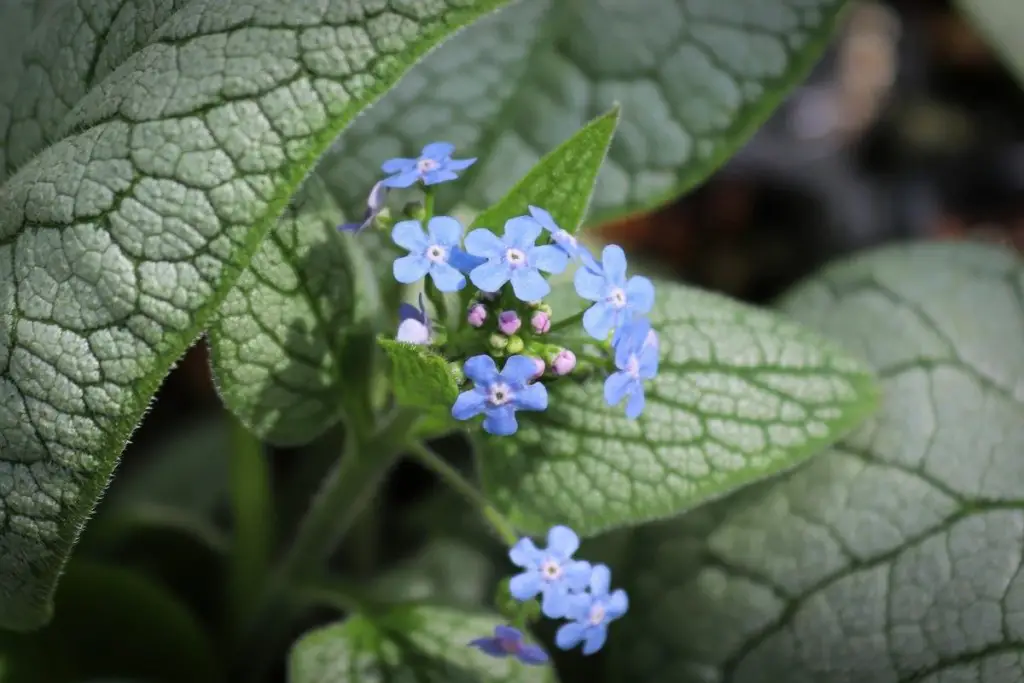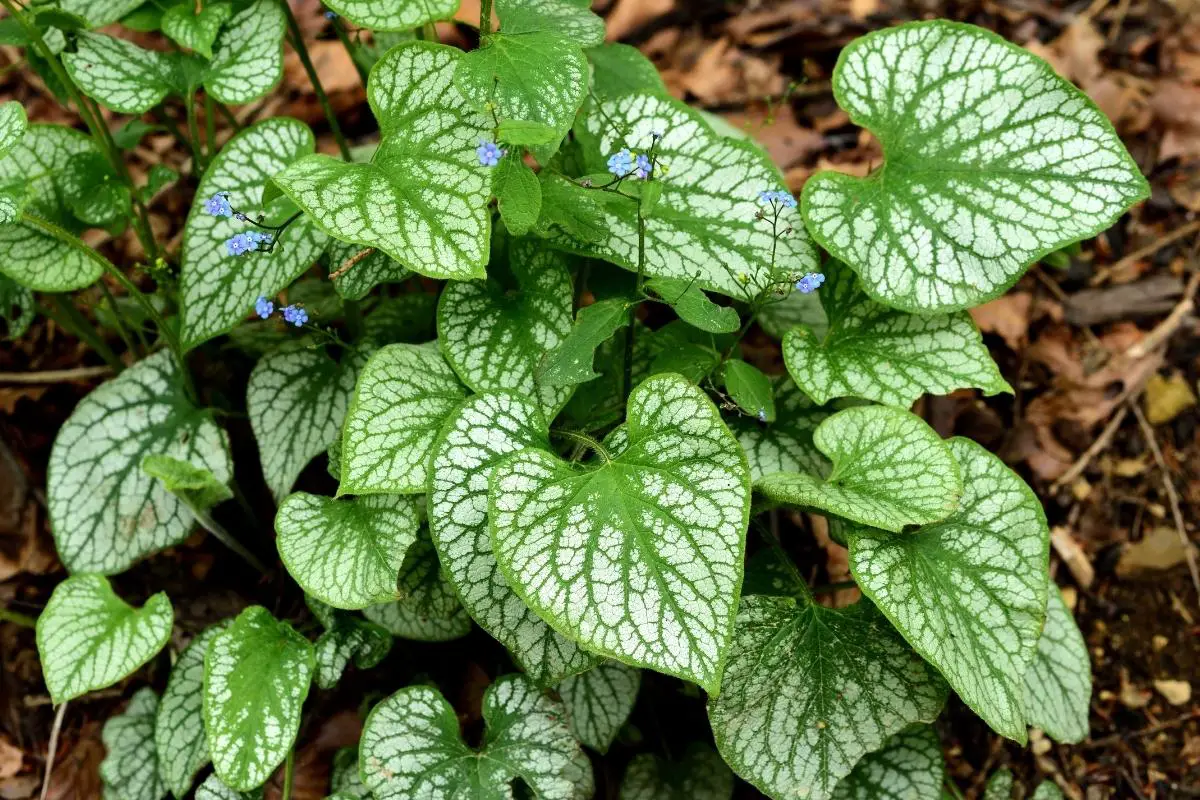Coming from the family of plants that are recognized as ‘Boraginaceae’, Brunnera is a visually appealing blue plant that can commonly be found across Europe and Western Asia, in regions that are covered by woodland environments. This plant can quickly be recognized by its shape, size, and vibrant blue color pattern. It’s also an extremely popular choice for gardens that receive a lot of shade from the sunlight.
Brunnera primarily blooms around April or May of each year and prefers shady regions, which is why many people choose to include this remarkable flower in their shady garden spaces. One of the nice things about Brunnera is that it doesn’t require a lot of maintenance and can even survive fairly well during the driest weather conditions.
It definitely doesn’t hurt to provide the plant with a little bit of water during dry times, but it should be able to survive with very little external assistance.
Table of Contents
Brunnera Scientific Name
The Brunnera is a perennial plant and flower.
Brunnera has small blue flowers and veiny leaves that appear glossy, with white, silver, and gray tones. These colors have dubbed this plant the name “Jack Frost.” Brunnera’s look good bunched together and can fill in areas in large planting areas. Source.
| Scientific name: | Brunnera macrophylla |
| Family: | Boraginaceae |
| Kingdom: | Plantae |
| Planting Distance: | 12” to 18” |
It’s also exciting to learn that Brunnera has several companion plants that are excellent partners to plant in nearby shady areas of your garden. In the following sections, we will be exploring some of the best companion plants for Brunnera and talk a little bit more about the maintenance that this type of plant may require.
What Does Brunnera Look Like?
There are several unique visual characteristics that you’ll notice almost immediately after observing Brunnera. First and foremost, you’ll likely appreciate the bright blue tint that becomes apparent when looking at this particular plant.
In addition, if you pay closer attention to the details, you’ll also notice that the basal leaves have a unique irregular shape that stands out to the naked eye. The bright blue flowers that bloom out of this plant will easily catch your vision and pique your curiosity.
This herbaceous perennial plant matures to an average height of three feet, although it’s not uncommon for shorter variations to appear as low as two feet. This plant does best when it’s in moderate shade and has a well-drained soil structure that doesn’t dry out.

Where Does Brunnera Grow?
The native regions where Brunnera commonly grows are across Europe and Western Asia. The most common place you’d find Brunnera is in the woodland regions of Europe or Asia.
Environments that receive a lot of shade are not the exclusive locations where you would find Brunnera. It’s possible to find adjacent regions with moderate sunshine and still find Brunnera growing and thriving. If the soil gets too dry and too much sunlight hits a Brunnera plant, that’s where the trouble starts and it only gets worse as conditions get dryer and dryer.
Even though Brunnera doesn’t do well in regions that experience heavy sunshine, it’s still a plant that can tolerate and adapt. This tenacious plant can handle itself in many different kinds of environments because of its internal characteristics. Six hours of sunshine per day is perfect for Brunnera plants, but they can survive on as little as two or three hours.
Companion Plants for Brunnera
The first companion plant that may come to your mind to partner with Brunnera is the Heuchera Forever Red. The stunning red leaves are an excellent pairing for the visual blue appearance that the leaves of a Brunnera plant present.
In addition, both Brunneras and Heuchera Forever Reds are capable of sharing the same environment because they thrive in similar conditions. It’s common for Heucheras to prefer a little bit more sunlight than Brunneras, but this minor difference is tolerable for both types of plants.
Hosta plants are another common companion plant that can be placed adjacent to Brunnera plants. They are generally considered to be tolerant of shady conditions, much like Brunnera plants. This is one of the main reasons that they are such a popular companion plant choice for shady garden spaces.
More brunnera companion plants:
- Ferns
- Epimedium
- Bloodroot
- Dutchman’s Breeches
- Wood Anemone
- Shooting Star
- Primroses
- Foam Flowers
- Hellebores
- Bleeding Heart
- Astilbes
While these are only a few of the optimal companion plants for Brunnera, just about any perennial plant that is shade tolerant and can survive in relatively low-sunlight conditions for many hours per day will be a good match. Source.
Is Brunnera Invasive?
Brunnera tends to grow very well in optimal conditions. Because of its ability to grow and spread, it has sometimes been considered to be invasive. If you are worried about brunneras taking over other plants, then you may want to make sure there is a landscaping border to separate these plants from others.
While brunnera could be considered invasive in certain situations, they are not a dangerous plant to the ecosystem. They will not spread far and wide enough to cause ecological damage.
Brunnera Diseases
Brunnera is not known to have many diseases or insect problems. This is great for gardens that are constantly under attack. However, they have been known to be damaged by foliar nematodes. Brunnera also has to deal with snails and slugs. Source.
Should Brunnera be Cut Back in the Fall?
Some perennial flowers should be cut back in the fall. This is not entirely the case for brunnera. For these, you should cut them back in spring during the growing season. In fall, cut them back just a little, so that the leaves are still covering the crown of the plant.
Cutting the plants during the growing season can help reduce diseases and other threats. I usually wait until the flowers start to fade and then cut them back. This helps promote growth for next year.
Want to learn more about growing brunnera?
Check out our article Brunnera Care
Related Questions
Do Brunnera plants prefer shady environments?
Brunnera’s prefer shady environments that only experience a little bit of sunlight. They can tolerate some dry conditions, but dry soil instead of moist soil can be a death sentence for this beautiful blue-tinted perennial plant.
Which environments can Brunnera be found in?
The woodlands regions of Eastern Europe and Northwest Asia are the native locations where Brunnera plants thrive and grow. While these tolerant plants prefer these specific conditions, they can survive in other regions too.

